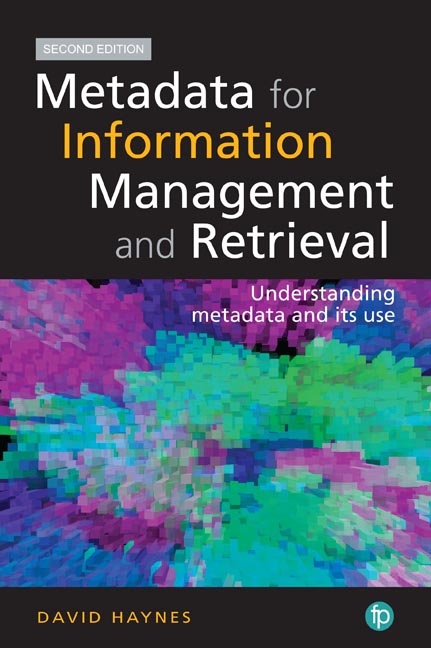2 - Defining, describing and expressing metadata
from PART I - METADATA CONCEPTS
Published online by Cambridge University Press: 08 June 2018
Summary
Overview
This chapter describes some of the concepts associated with metadata. It considers ways in which metadata can be expressed and focuses on document mark-up languages. It then considers schemas as one method of defining metadata standards and data elements. Databases of metadata are described as an alternative to embedded metadata. The last section of the chapter shows some examples of how metadata is used in different contexts such as document creation, records management, library catalogues, digital repositories and image collections.
Defining metadata
Metadata is used in catalogues of digital and physical information resources. The requirements for books in a library catalogue might be very different from the metadata embedded in a web page, but the general concepts of metadata apply to both. Its use for digital and printed resources provides some helpful examples. Document mark-up languages such as SGML and XML are widely used to express metadata standards.
Document mark-up
The development of mark-up languages is an excellent example of the way in which metadata can be applied to and expressed in documents. Electronic documents are one of the most common forms of digital object to which metadata is applied, and range from web pages through to electronic records, and may incorporate text, images and interactive material.
Mark-up languages were initially developed to describe the layout and presentation of documents. They enabled organisations to manage large numbers of documents that needed to be presented in different formats. Mark-up languages also provide a means of defining metadata standards.
Mark-up languages, which arose from text processing, are defined as: ‘computer systems that can automate parts of the document creation and publishing process’ (Goldfarb and Prescod, 2001). Mark-up languages containing a combination of text and formatting instructions include:
• HTML
• XML
• TEI
• LaTeX.
Standard Generalized Markup Language (SGML)
Standard Generalized Markup Language (SGML) is used as the basis for describing many web pages and for marking up metadata. Generalised document mark-up originated in the late 1960s from the work of three IBM researchers, Goldfarb, Mosher and Lorie, whose initial letters make up the ‘GML’ in SGML (Goldfarb, 1990).
- Type
- Chapter
- Information
- Metadata for Information Management and RetrievalUnderstanding metadata and its use, pp. 19 - 34Publisher: FacetPrint publication year: 2018
- 1
- Cited by



